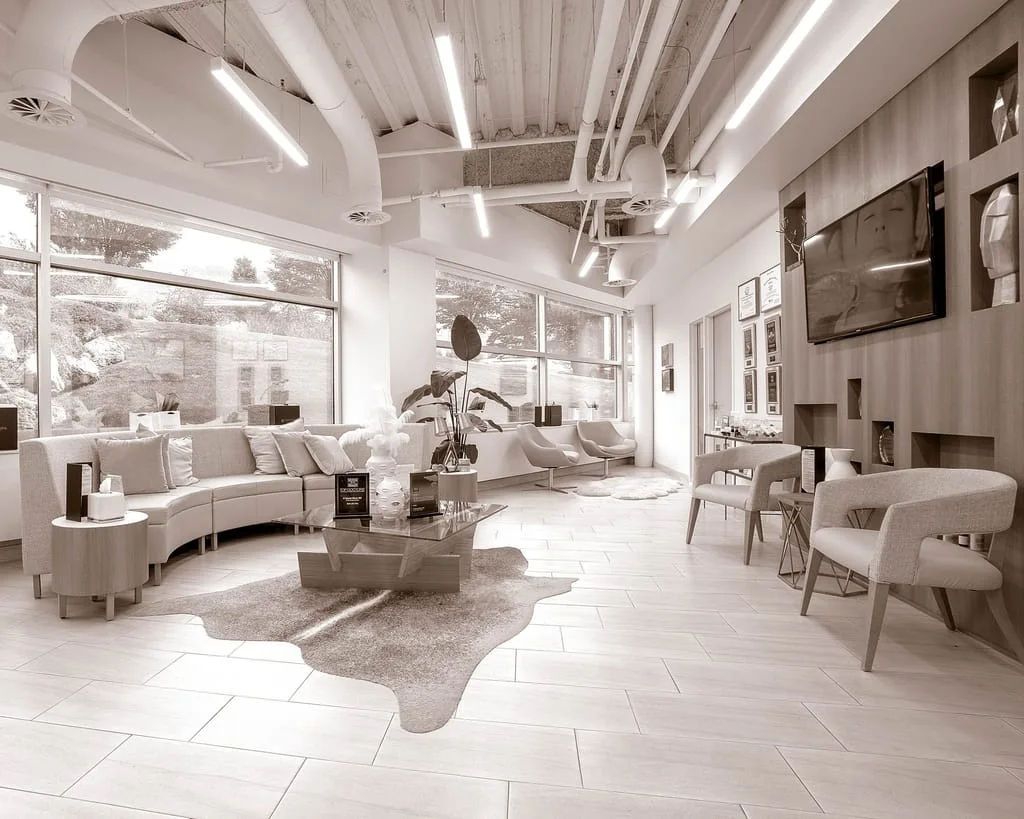Utah’s Leading Non-Surgical RhinoPlasty Surgeons
Non-surgical rhinoplasty, also known as liquid rhinoplasty, uses injectable fillers to reshape and contour the nose without the need for surgery or general anesthesia. Our team of skilled and experienced practitioners is committed to providing personalized care and natural-looking results to help you achieve your desired aesthetic goals. Whether you are looking to correct asymmetry, smooth out bumps or humps, or enhance the overall shape of your nose, we are here to guide you through every step of the non-surgical rhinoplasty process. We understand that every patient is unique, which is why we take the time to listen to your concerns and develop a customized treatment plan tailored to your individual needs.
What Does A Non-Surgical Rhinoplasty Entail?
A non-surgical rhinoplasty, also known as a liquid rhinoplasty, is a minimally invasive cosmetic procedure that uses injectable fillers to reshape and contour the nose without the need for surgery. The procedure involves injecting small amounts of hyaluronic acid fillers, such as Restylane or Juvederm, into specific areas of the nose to improve its appearance. The filler is carefully injected and molded by the practitioner to achieve the desired results, such as correcting asymmetry, smoothing out bumps or humps, or enhancing the overall shape of the nose. Non-surgical rhinoplasty is a popular option for individuals looking to enhance the appearance of their nose without undergoing surgery or taking time off from work or daily activities.

Who Is An Ideal Candidate For Non-Surgical Rhinoplasty?
An ideal candidate for non-surgical rhinoplasty is someone who is looking to improve the appearance of their nose without undergoing surgery. Good candidates include individuals with minor cosmetic concerns, such as a small bump or slight asymmetry, or those who are seeking to improve the overall shape and contour of their nose. Non-surgical rhinoplasty may also be a good option for those who have had a previous rhinoplasty surgery and are seeking to correct minor imperfections or asymmetry.
It is important to note that non-surgical rhinoplasty is not a suitable option for individuals with significant structural issues, such as a deviated septum or severely crooked nose. In such cases, surgical rhinoplasty may be necessary to achieve the desired results. Additionally, individuals who are pregnant, breastfeeding, or have a history of allergic reactions to injectable fillers should avoid non-surgical rhinoplasty.
Procedure Description
For a non-surgical rhinoplasty procedure, the practitioner will clean the injection sites and apply a numbing cream to minimize any discomfort during the procedure. In some cases, a local anesthetic may also be used. Using a fine needle, the practitioner will inject small amounts of filler into specific areas of the nose to achieve the desired results. The filler is carefully molded and shaped to create a natural-looking contour and enhance the overall shape of the nose. Once the injection is complete, the practitioner will evaluate the results and make any necessary adjustments to ensure a symmetrical and natural-looking appearance.
The entire procedure can typically be completed in as little as 15-30 minutes, and patients can enjoy immediate results that can last up to 12-18 months, depending on the type of filler used and the individual's unique physiology.
Recovery Process
The recovery process for non-surgical rhinoplasty is typically minimal compared to traditional surgical rhinoplasty. Most patients can resume normal activities immediately after the procedure, although it is recommended to avoid strenuous exercise or activities that could cause significant movement or pressure to the nose for at least 24-48 hours.
Some patients may experience mild swelling, bruising, redness, or tenderness at the injection sites immediately after the procedure. These side effects are usually temporary and should subside within a few days. Patients can use ice packs to help reduce swelling and pain, and should avoid touching or massaging the treated area.
It is important to avoid wearing glasses or sunglasses that rest on the nose for at least two weeks after the procedure to avoid disrupting the filler and causing asymmetry. Patients should also avoid excessive sun exposure and apply sunscreen to the treated area to help protect the skin and maintain the results.

NON-SURGICAL RHINOPLASTY RESULTS
Here are some of the potential results you can expect from a non-surgical rhinoplasty:
- Smoother nasal bridge: If you have a bump or hump on your nose, dermal fillers can be used to smooth out the bridge and give your nose a straighter appearance.
- Improved symmetry: If your nose is slightly crooked or uneven, fillers can be used to create a more symmetrical look.
- Correcting a droopy tip: Fillers can also be used to lift and reshape the tip of the nose, giving it a more upturned appearance.
- Enhancing nasal contour: Fillers can be used to add volume and contour to the nose, creating a more defined and sculpted look.
- Results are temporary: The results of a non-surgical rhinoplasty are not permanent and typically last anywhere from six months to two years, depending on the type of filler used and how your body responds to it.
TESTIMONIALS

NON-SURGICAL rhinoplasty FAQ
The Consultation
The non-surgical rhinoplasty consultation is the chance for you and your surgeon to meet and get to know each other. This relationship is important for several reasons. You should feel comfortable with your surgeon to ensure that you are on the same page before surgery and that you will feel comfortable voicing any concerns or questions before and after the procedure.
Your surgeon will evaluate your nose and talk to you about your desired results. They will give you honest and realistic expectations and inform you of any potential risks involved. These risks can vary based on each individual person, so it is important to be honest and upfront during your consultation.


